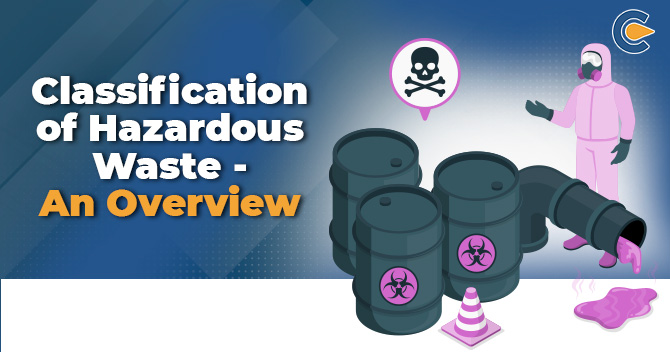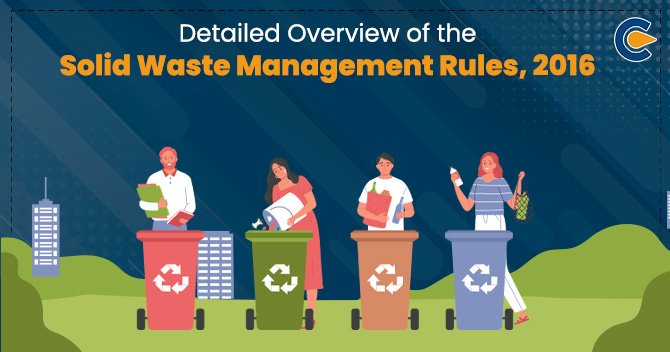Hazardous wastes are such wastes that may or tend to cause severe health effects on the ecosystem and human beings. So it’s important to know the identification and classification of Hazardous Waste. These wastes pose potential risks to living organisms or human health due to the fact that they are:
- Non-degradable or persistent in nature;
- Can be biologically expanded;
- They are highly toxic & even lethal at very low concentrations.
These lists relate only to the intrinsic hazard of the waste, under uncontrolled release, to the environment, regardless of pathways/quality to humans or other vital organisms such as animals & plants. The basic criteria used to know the nature of the hazard is phytotoxicity, bio-concentration, toxicity, and genetic activity. The danger to public health & the environment of a given hazardous waste is dependent on the quantity & characteristics of the waste involved.
What are Hazardous Wastes?
Before we discuss the identification and classification of hazardous wastes, let’s understand the meaning of hazardous wastes. Hazardous wastes are those that may include toxic substances generated from the hospital, industrial, some types of household wastes. These wastes could be inflammable, explosive, corrosive, or react when exposed to other materials.
The management of hazardous wastes has become a specialised discipline because of the difficult nature of the problem & the solutions available to humanity. The mismanagement examples of hazardous wastes causing tragic environmental & human outcomes are numerous. The management process of hazardous wastes is based on the definition & classification of hazardous wastes and their toxic effects on humans & taking into consideration the application of risk management to control human health & environmental impacts of hazardous wastes. Hence, Hazardous Waste Management deals with minimising harmful effects on humans & the environment by applying special techniques of storage, treatment, handling, transportation, and disposal of hazardous wastes.
Characteristics of Hazardous Wastes
The regulations specify characteristic hazardous wastes as wastes that exhibit measurable properties posing enough threats to warrant regulations. For a waste to be considered a characteristic hazardous waste, it must cause or knowingly contribute to increased mortality or an increase in serious irreversible or incapacitating reversible illness or pose a significant threat to humans and the environment when it’s improperly treated, transported, disposed of, stored, or otherwise mismanaged. In other terms, if the wastes generated at a facility are not listed in F, K, P, or U lists, the final step to finding out whether a waste is hazardous is to estimate it against the following 4 hazardous characteristics:
- Corrosivity: A liquid waste that has a pH of less than/equal to 2 or greater than/equal to 12.5 is deemed to be corrosive hazardous waste. Sodium Hydroxide (NaOH), a caustic solution with a high pH, is often used by many industries to clean/degrease metal parts.
- Ignitability: A waste is an ignitable or burnable hazardous waste, if it has a flashpoint of less than 60C, easily catches fire & burns so vigorously as to create a hazard or is an intangible compressed gas or an oxidiser.
- Toxicity: To know if waste is toxic or not, a representative sample of the material should be subjected to a test or examination conducted in a certified or authorised laboratory. The toxic characteristic recognises wastes that are likely to seep dangerous concentrations of toxic chemicals into groundwater.
- Reactivity: A material is regarded as a reactive hazardous waste if it’s unstable, reacts aggressively with water, creates toxic gases when exposed to water/corrosive materials, or if it’s capable of explosion when exposed to heat or a flame.
What is the Classification of Hazardous Waste?
Following is the classification of hazardous waste:
- Radioactive Substance: These substances are those substances that emit ionising radiation and these substances are hazardous because lengthy exposure to radiation often results in damage to living organisms. Such substances are of special concern because they continue for a long period. The period in which radiation happens is commonly measured & expressed as half-life, i.e., the time needed for the radioactivity of a given amount of the substance to decay to half its initial value.
- Biomedical Wastes: The primary sources of hazardous biological wastes are biological & hospitals research facilities. The ability to infect other living organisms & the ability to produce toxins are the most noteworthy characteristics of hazardous biological wastes.
- Chemicals: Most dangerous chemical wastes can be categorised into different groups: inorganic metals, flammables, acids & bases, synthetic organics, and explosives. Some of the chemicals are dangerous because they are highly toxic to most life forms. When such hazardous compounds or elements are present in a waste stream at levels equal to or greater than their threshold levels, the overall waste stream is recognised as dangerous.
- Flammable Wastes: such wastes are also recognised as hazardous chemical wastes. This dual grouping is vital because of the high potential hazard in collecting, robust, and disposing of flammable wastes. Such wastes may be liquid, solid or gaseous, but most often, they are liquids.
- Explosives: such hazardous wastes are primarily ordnance (artillery) materials, i.e., the wastes resulting from ordnance manufacturing & some industrial gases. Similar to flammables, these wastes also have a high potential for hazard in storage, disposal, collection; therefore, they should be regarded separately in addition to being listed as hazardous chemicals. This waste may exist in liquid, gaseous, or solid.
Conclusion
After discussing the classification of hazardous waste, it’s clear that wastes are secondary materials, which are usually categorised into six different categories as inherently waste such as spent materials, by-products, scrap metals, and commercial chemical products. Solid wastes from a subset of all hazardous wastes & secondary materials. However, note that some secondary materials are not regulated as wastes, as they are reused & recycled.
Read our Article:Norms around Transportation of Hazardous and Other waste in India











